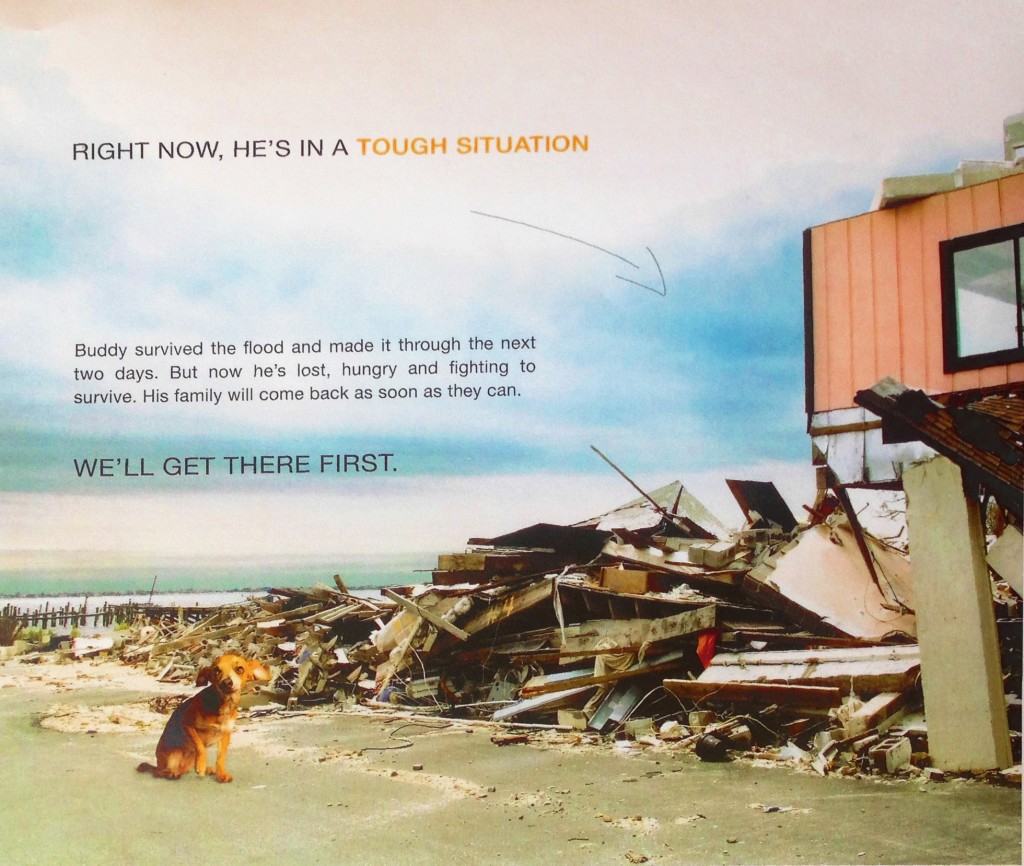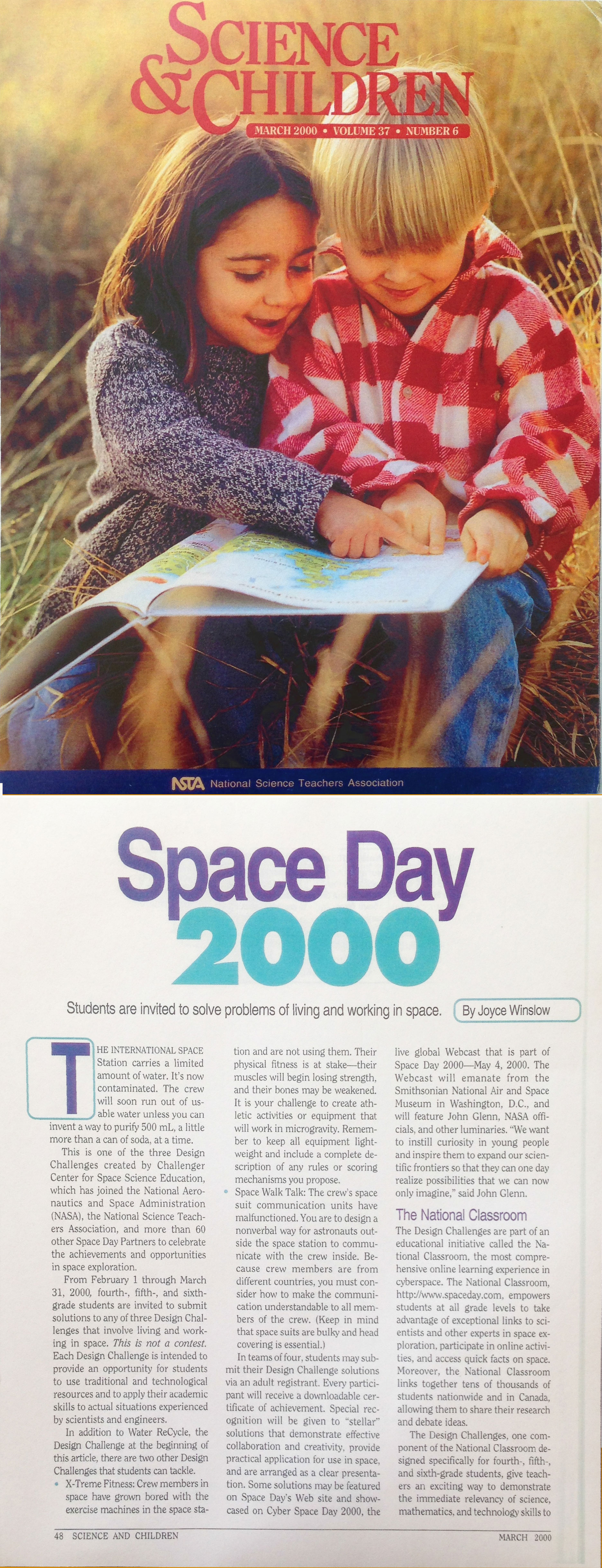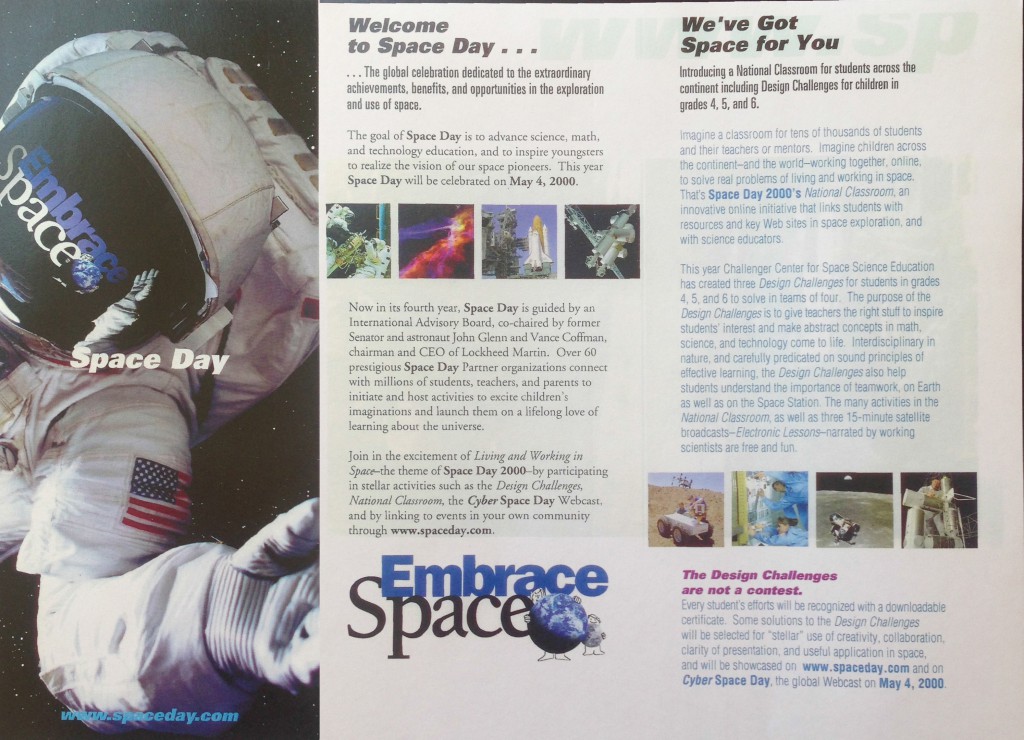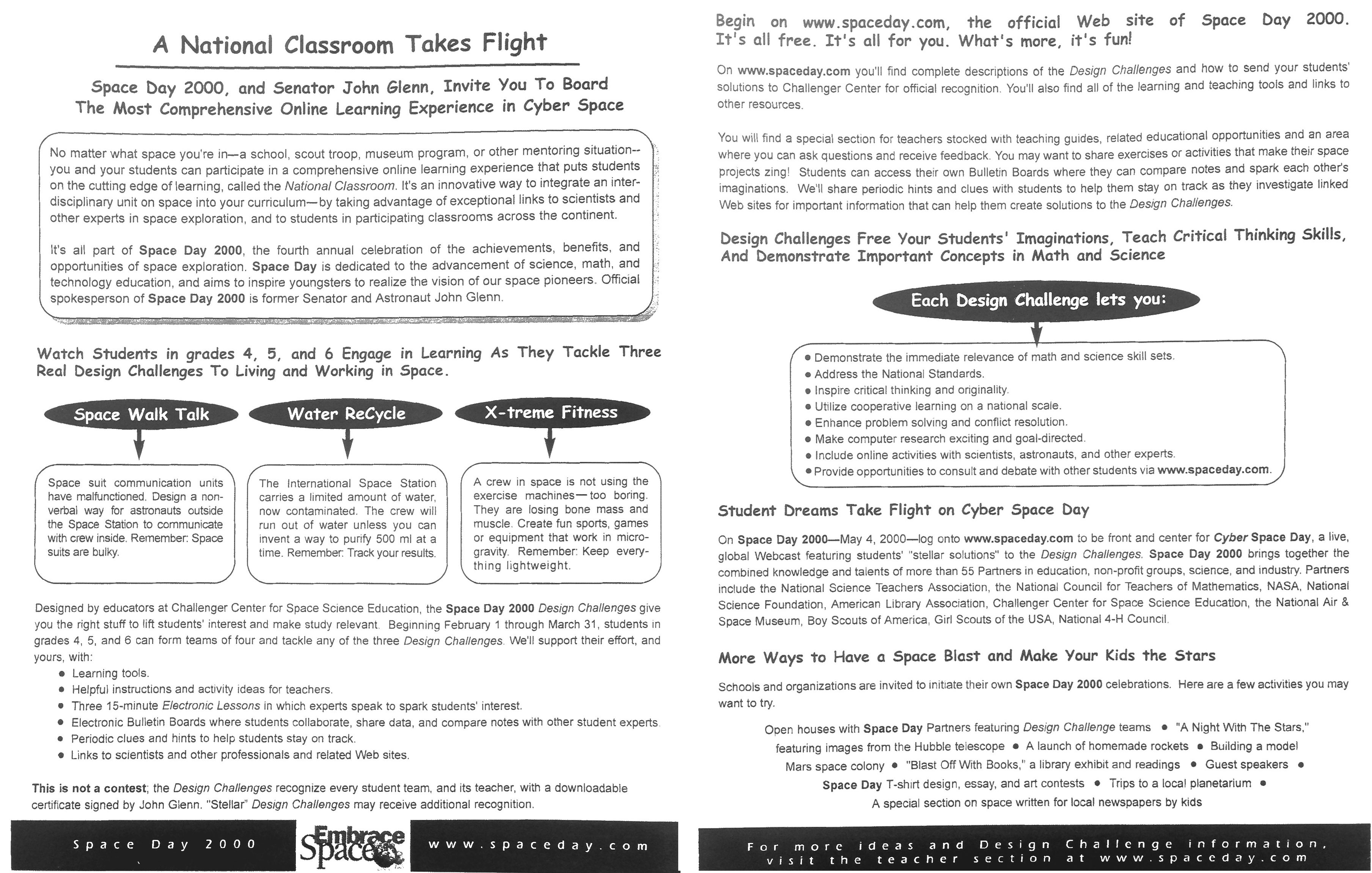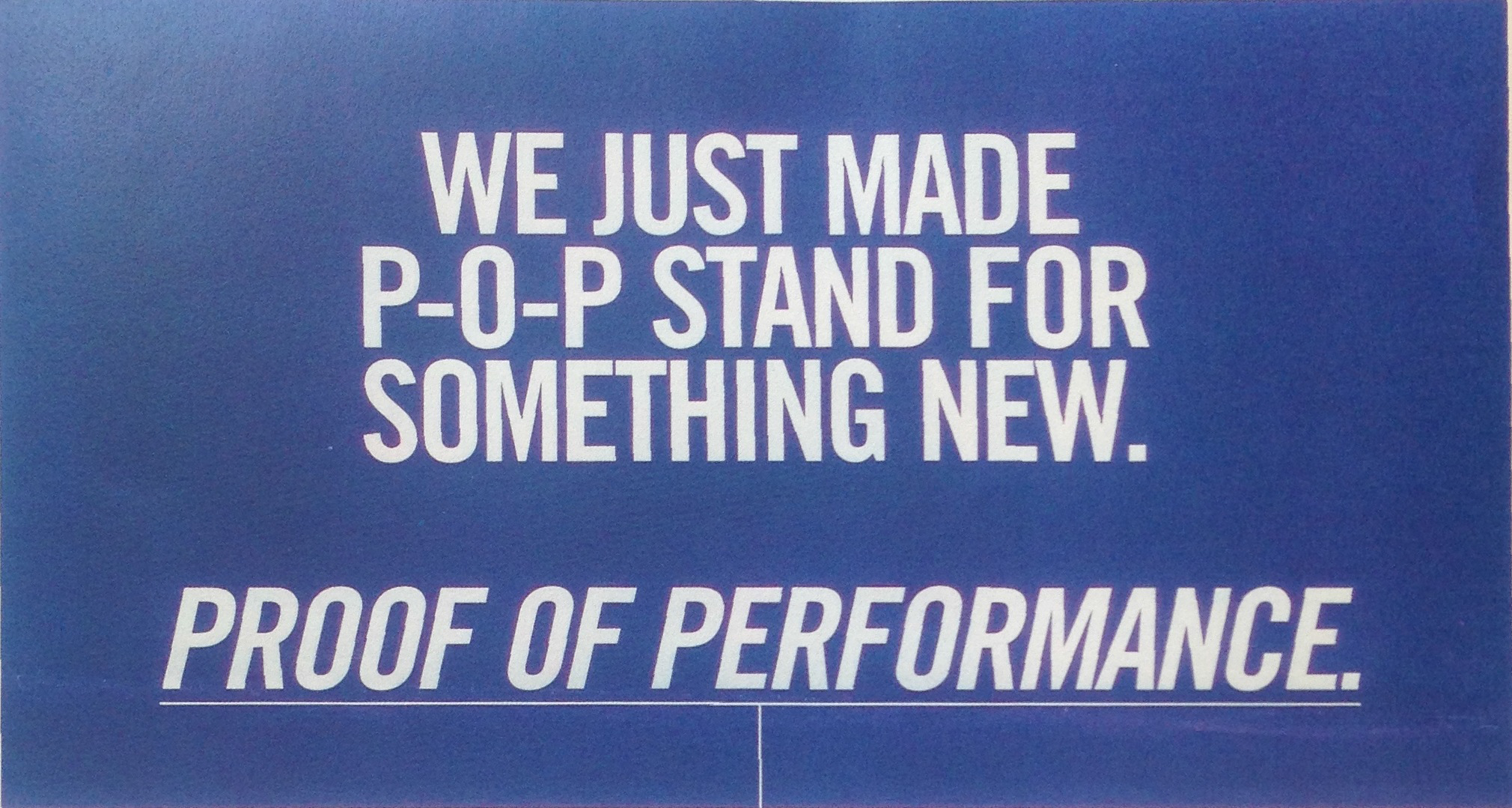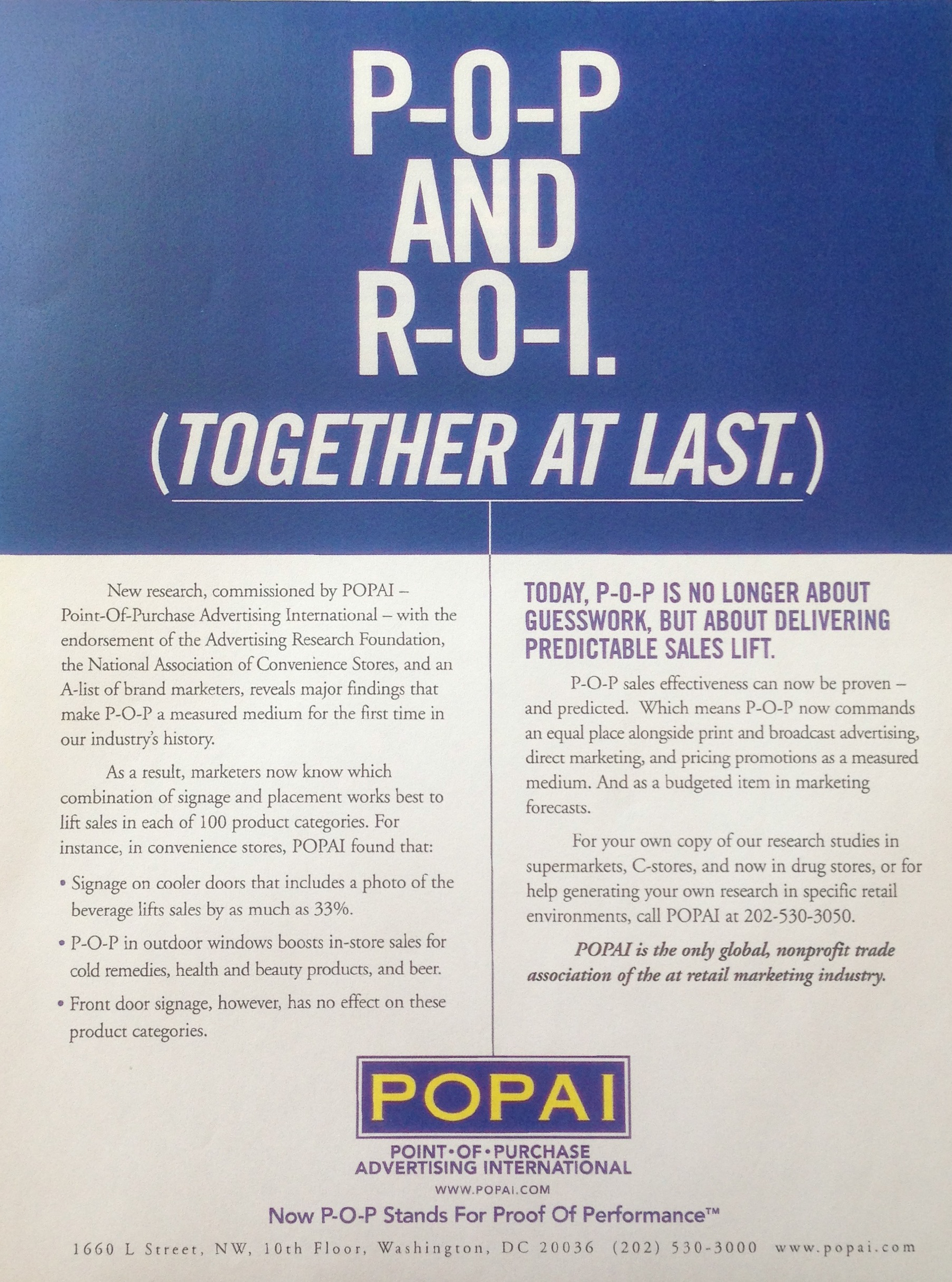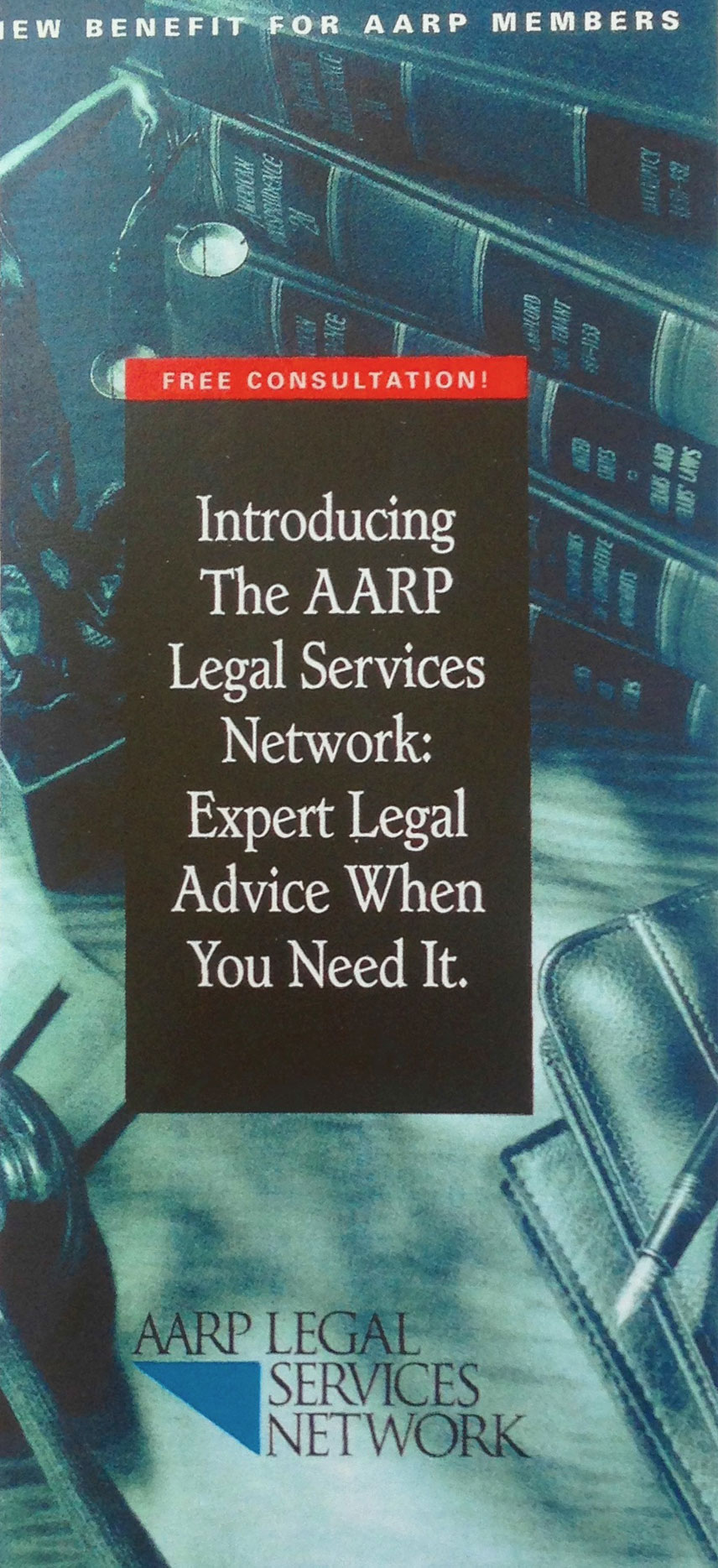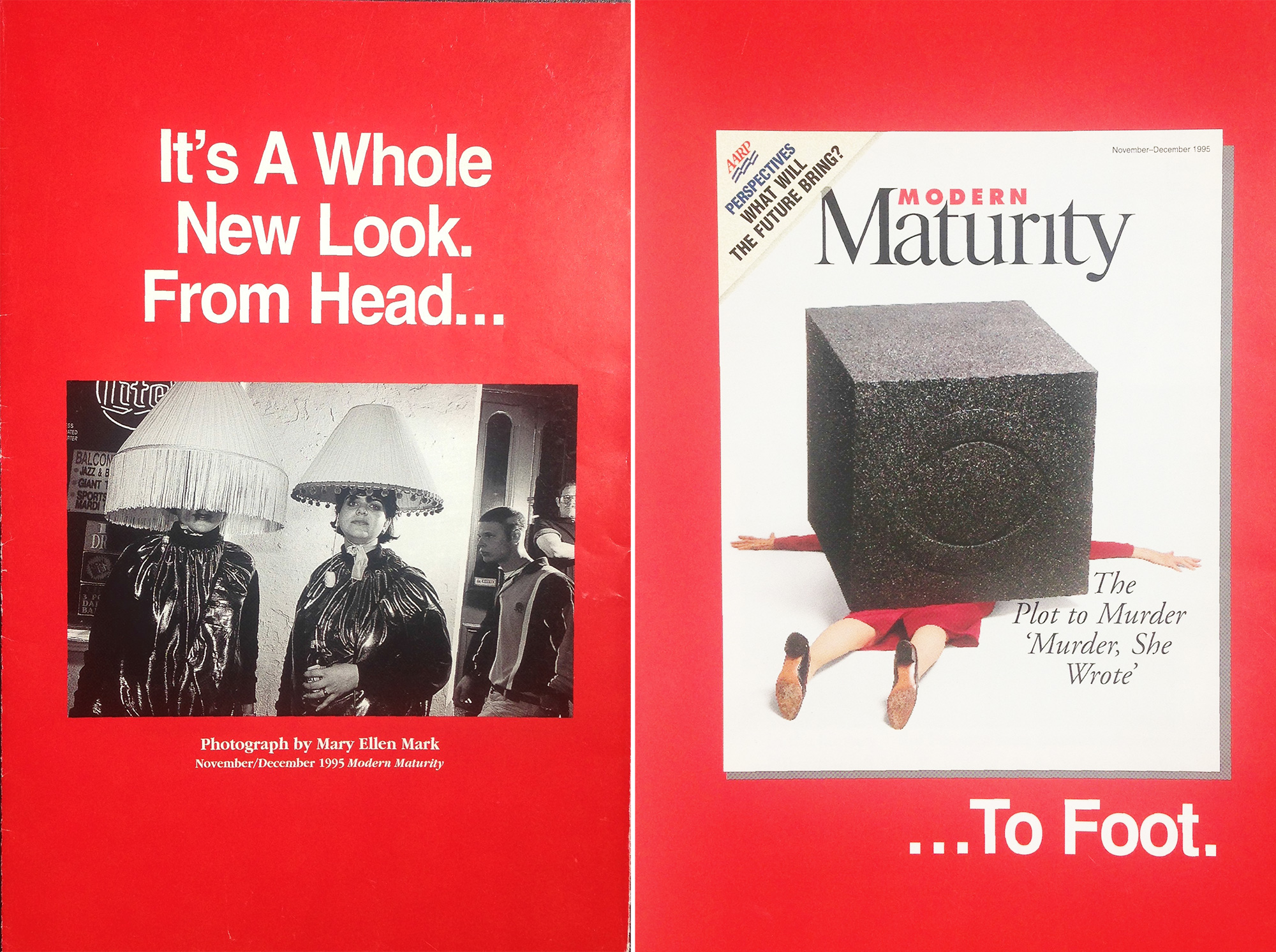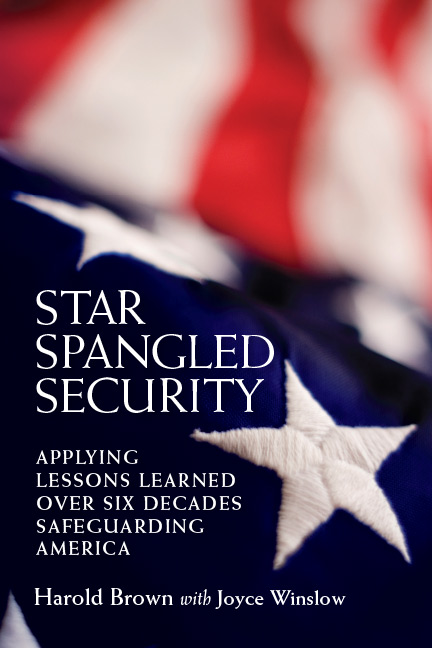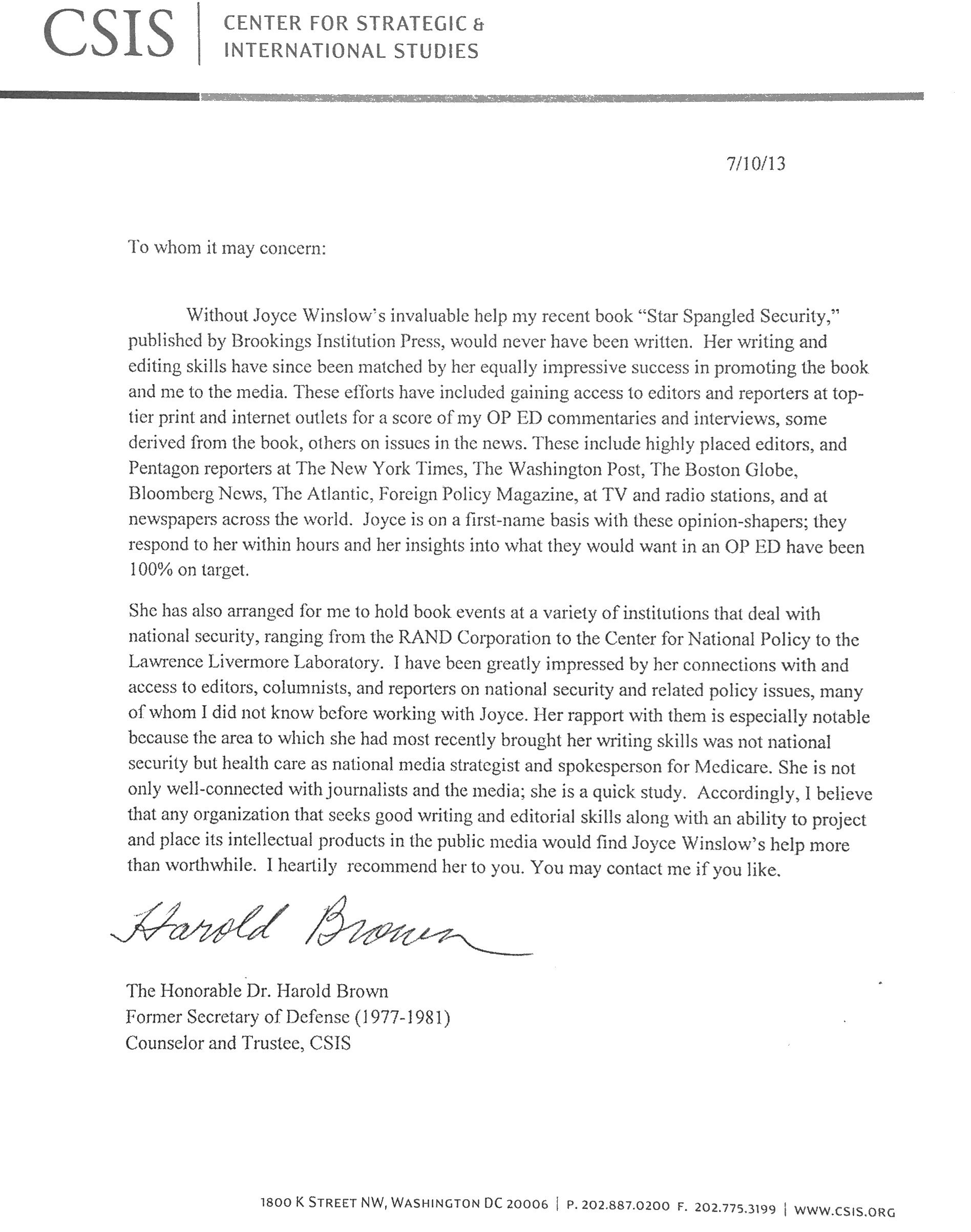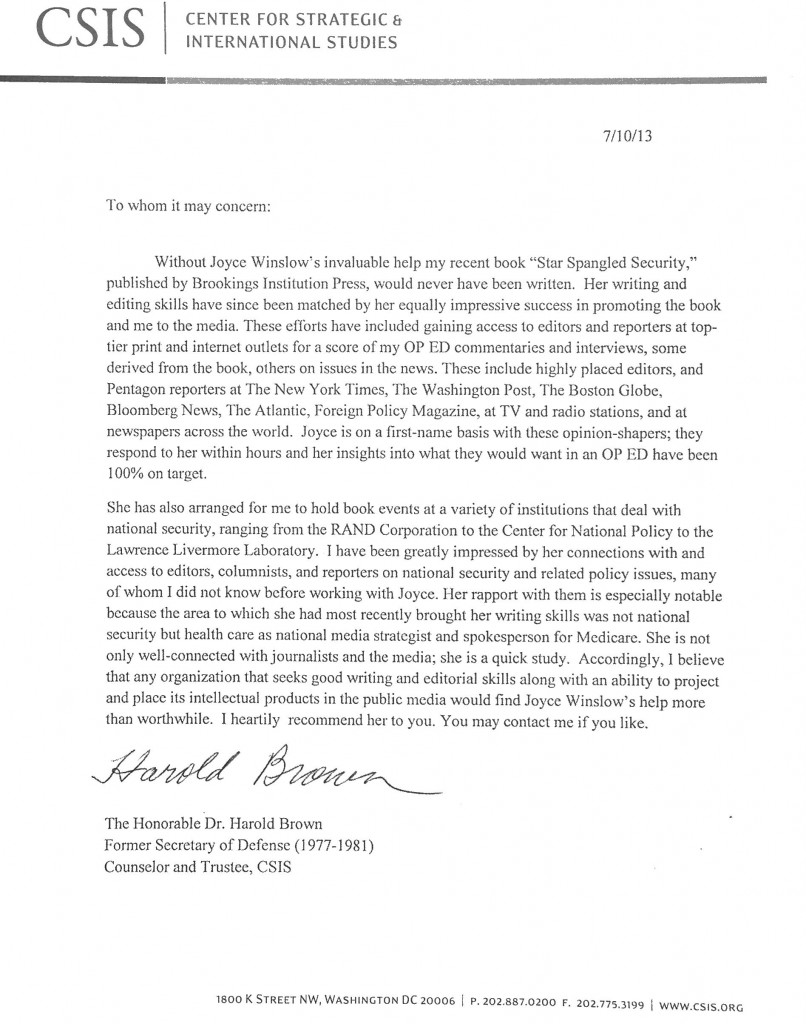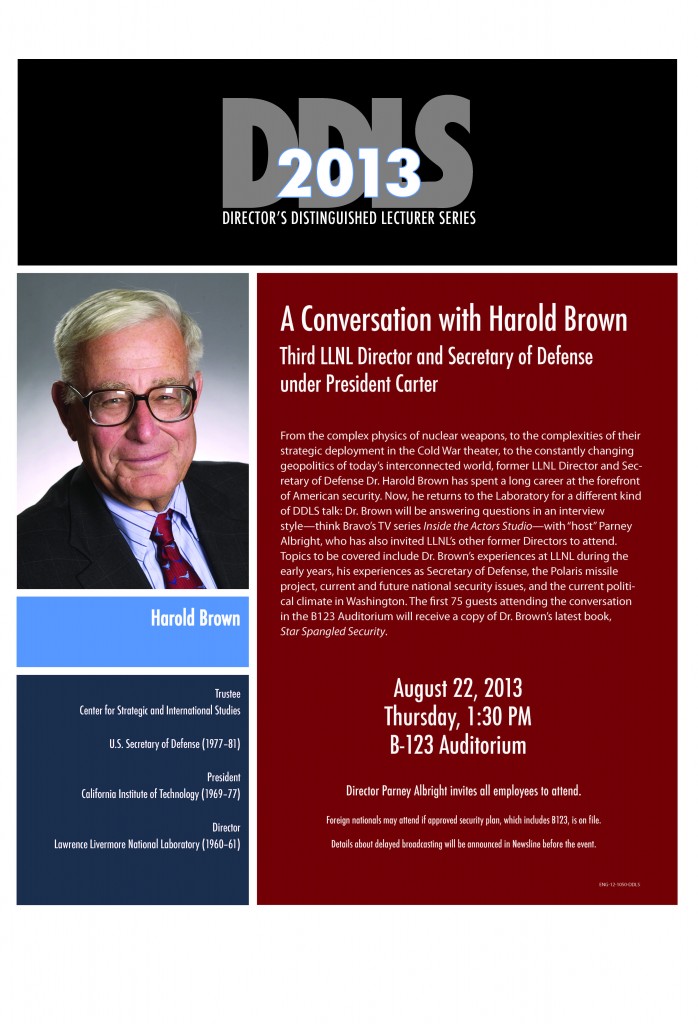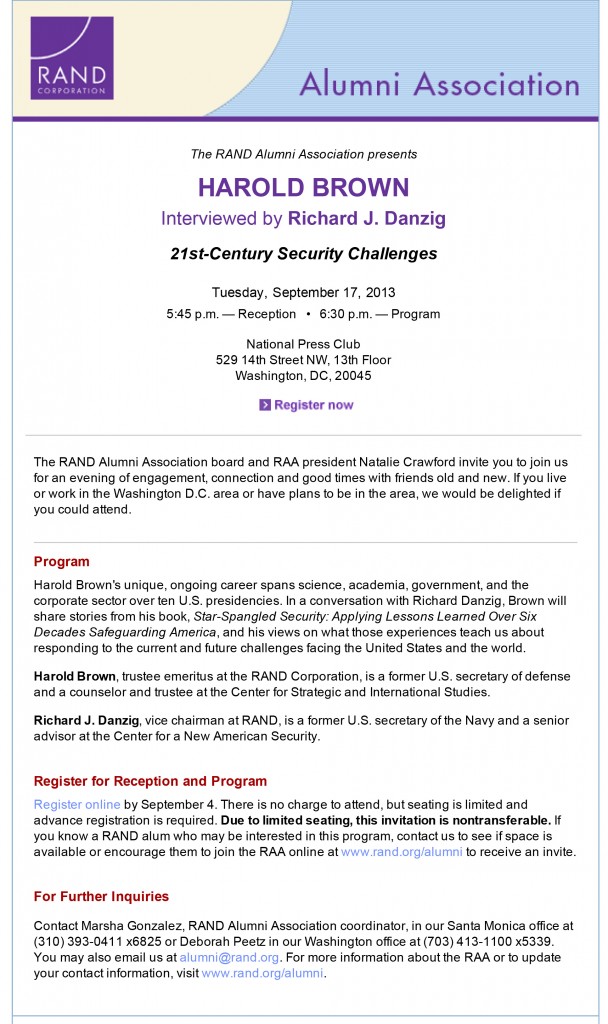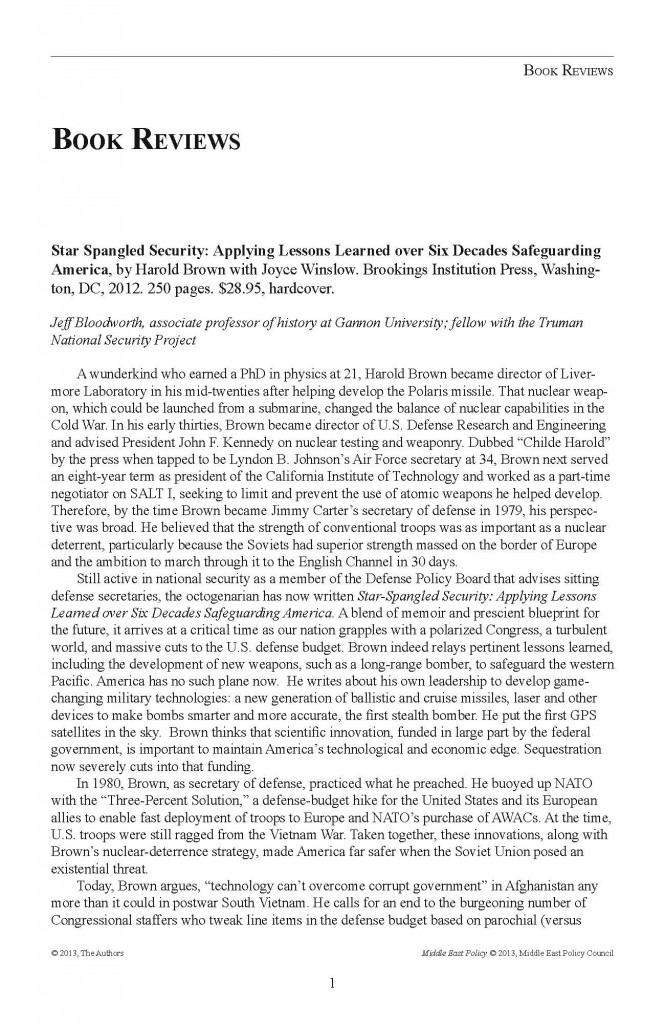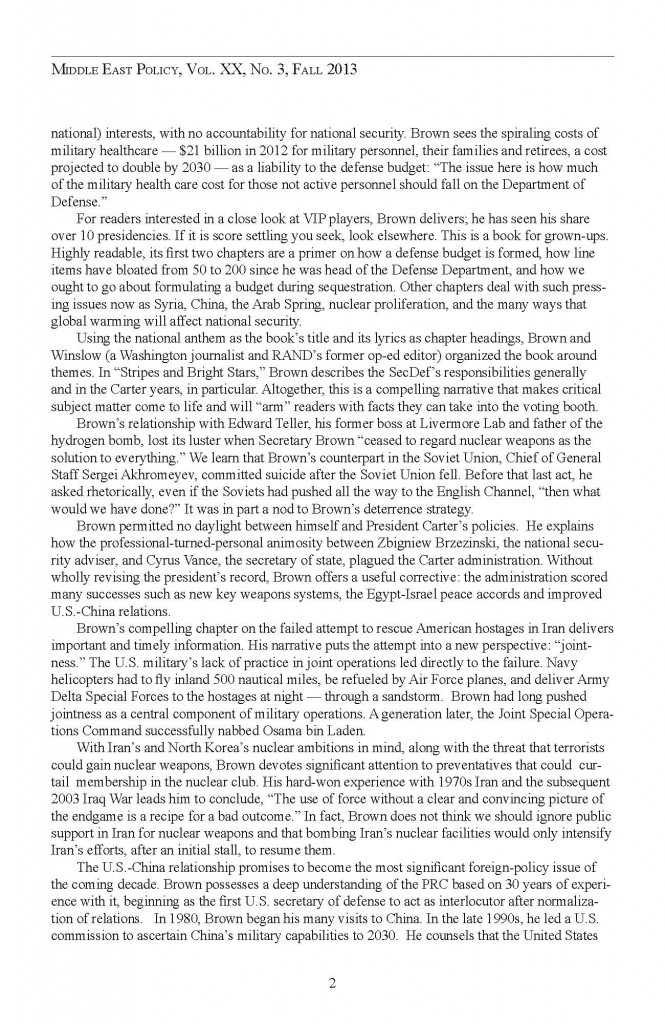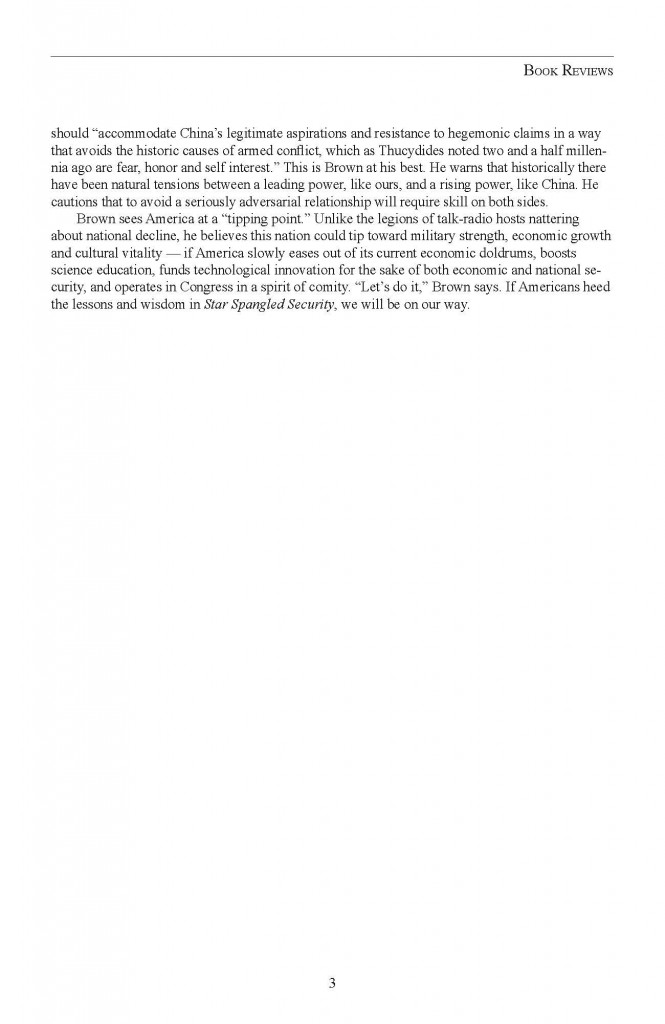Winslow brings 20 years of public relations experience serving as spokesperson and media strategist to the Administrator of Medicare; VP of Corporate Communications and Marketing for a Gannett TV station and regional PR Director for Maryland Public Television; Director of Communications for two national non-profits; and PR executive for ad agencies. Her expertise includes crisis communications, media training, branding and positioning, retail signage, consumer advertising, internal and business-to-business communications, and direct mail.
DINING WITH HEART,© ™ a comprehensive national PR program Winslow created and implements, puts healthy food on restaurant menus under a sponsoring hospital’s endorsement. The most successful program of its kind, it has brought visibility and 10,000-20,000 potential patients to the cardiac center of each sponsoring hospital. The program is available only in certain market areas.
Read More
PARTIAL LIST OF CLIENTS AND PROJECTS
AMERICAN HUMANE ASSOCIATION, Washington, DC. 2011-2012
This century-old organization for animal and children’s welfare was suffering dwindling resources and little name recognition. Winslow directed a re-design of all printed materials to differentiate AHA from other groups including The Humane Society. She wrote new print and direct mail pieces and Web communications, and helped stage a lucrative fund-raiser featuring Whoopi Goldberg at The National Arts Club in NYC. Winslow invited and wrote copy for speakers, including Whoopie, the CEO of Hallmark Channel, handlers of Rin Tin Tin, and two-footed heroes of 9/11 who worked with four-footed ones.
She promoted a Hero Dog national contest on the AHA Website, and on radio and TV that resulted in 200,000 hits and increased donations; facilitated a partnership with the Mars Corporation to research the human-animal bond; requested and wrote an endorsement video from The Honorable James P. Moran, Chair of the Congressional Animal Protection Caucus, and led efforts for an official AHA Hero Dog Day declared in 26 States. Winslow wrote CEO speeches, press releases, and brochures on a range of AHA services, and launched a research project with newly minted veterinarians to raise visibility among professionals. Within a year, AHA increased both income and membership.
![]() THE RAND CORPORATION, Arlington, VA. 2010-2013
THE RAND CORPORATION, Arlington, VA. 2010-2013
As adjunct Commentary Editor, Winslow worked with RAND junior and senior researchers to write and edit OP EDs. Winslow achieved a 98% placement rate — all in top-tier news outlets. This position put Winslow on a first-name basis with OP ED editors at respected newspapers and blogs across the country. See OP EDs for specific placements.
![]() RESEARCH!AMERICA (R!A), a non-profit association of CEOs in pharma companies, deans of medical schools, and State public health officials, Alexandria, VA
RESEARCH!AMERICA (R!A), a non-profit association of CEOs in pharma companies, deans of medical schools, and State public health officials, Alexandria, VA
For two years Winslow led a $4 million successful, national communications campaign to double the NIH budget. She developed, tested, and ran targeted messages to Congress, the media, and the public tying multiple stakeholders to the strategy at 50 sites.
She led still other initiatives State by State, polling citizens on health issues key to each State and staging highly visible media events with the governor delivering poll results.
In her R!A branding campaign, she synthesized R!A reports and news into one-page Fact Sheets and supported those with LTEs and OP EDs that appeared in top-tier newspapers including The Wall St. Journal. R!A visibility jumped from several articles a year to hundreds a year.
One OP ED she wrote for Dr. DeBakey, bylined by him exactly as Winslow wrote it, was not only published in The Houston Chronicle, but also endorsed by the paper in its own editorial supporting DeBakey’s call to increase medical research.
Winslow convened a panel of prestigious health policy reporters and scientists from across the country to write and publish best ideas for bridging the “language chasm” between scientists and reporters.
![]() SPACE DAY, Washington, DC, sponsored by Lockheed Martin, co-chaired by The Honorable John Glenn to raise public visibility of the International Space Station
SPACE DAY, Washington, DC, sponsored by Lockheed Martin, co-chaired by The Honorable John Glenn to raise public visibility of the International Space Station
This year-long and annual campaign aligns with science curricula in elementary schools and culminates with a live Webcast moderated by John Glenn from the National Air and Space Museum before 35,000 visitors. The Webcast includes live satellite feeds from the Houston Mission Control Center and the International Space Station.
For SPACE DAY 2000, Winslow managed efforts by 70 partner organizations including NASA, the National Science Foundation, and Scholastic, Inc. to inspire elementary school children to solve three challenges of living and working in space. Students submitted their solutions to an online National Classroom on www.spaceday.com where they could see work done by other children across the country. Some entries resulted in paid travel to SPACE DAY in Washington, DC.
Winslow began with careful coordination of partner communications, outreach to schools and classrooms nationwide, and presentations at national teacher meetings. She wrote bylined articles in teachers’ periodicals, a monthly newsletter for partners, and monthly press kits (each different) to science and education reporters across the country. Press kits were individualized with entries from local children. Teachers received monthly kits with posters, interviews with astronauts, and other curriculum-based material. Teachers could download a Certificate of Participation signed by John Glenn to personalize for each student.
Components included Student Signatures in Space—1.2 million were digitized and flown aboard a space shuttle so students could follow their “mission”, and a student-led project to see if pupae morphed into butterflies in space. (They did and returned to Earth in good health).
Results: Year-long media efforts resulted in multiple reports in 80 of the top 100 daily newspapers, all local TV stations around the country, 800 radio shows, and all major national TV newscasts. Signatures in Space posters now hang in the lobby of the National Air and Space Museum.
![]()
click image to enlarge
a nonprofit association, Alexandria, VA. 2003-2004
Its membership flagging and loyalty waning due to a vibrant competing association with a charismatic leader, POPAI was in trouble. As its new VP of Communications, Winslow repackaged POPAI’s disparate research and anecdotal knowledge into in-depth reports on the most effective ways to segment audiences and position point-of-purchase messages by product and type of store. She placed a general synopsis in all retail trade publications creating a demand for the more detailed reports, now a lucrative intellectual property. POPAI sold the reports to non-members but offered them free to new or renewing ones. This strategy engendered more new members than at any other time in POPAI’s history and helped retain 83% of existing members.
Winslow wrote CEO speeches, all media communications, directed lobbying efforts, and supervised a staff that produced a monthly newspaper and seminars.
Results: the organization’s publicity exploded from five articles a year to 50 articles a month. Winslow ran an ad campaign that linked POPAI research to return on investment.
![]() AARP: LEGAL SERVICES, POLICIES, AND PRODUCTS,
AARP: LEGAL SERVICES, POLICIES, AND PRODUCTS,
Washington, DC
For five years Winslow served as Spokesperson and Senior Media Liaison for AARP, led the launch of new products and publicity of existing products and services, and as a result of this work was named Senior Editor of its magazine.
Winslow launched AARP’s Legal Services Network to aid vulnerable elderly. The product began with discounted fees for wills and expanded into affordable legal help in many areas. It is now one of AARP’s most profitable products. Winslow wrote the brochures and print ads that gained both participating lawyers and clients.
She penned an effective response to opposition from the American Bar Association (ABA) newly pre-empted in all alphabetical legal listings by AARP. The ABA called AARP’s legal services “profiteering with no expertise in geriatric law” in a New York Times Op Ed. To counter, Winslow sent testimonials from seniors to legal reporters along with a full explanation of the controversy, which resulted in favorable articles in The New York Times, USA TODAY, The Wall St. Journal, and The Washington Post.
As spokesperson, Winslow required a broad, flexible knowledge of AARP, its personnel, lobbyists, position statements, sources of information, all publications and products, and political sensitivities. She reacted to 100 media calls a week, pro-actively explained policies, wrote press releases, and advised AARP media liaisons across the country, linking them via weekly phone calls. She handled crisis communications, facilitated AARP communication to its public and across such agencies as Medicare, Social Security and the Veterans Administration.
In one widely publicized campaign, Winslow translated the results of a Roper-Starch survey on the buying habits of older Americans into an effective press release that exploded myths and re-defined mature consumers into a new marketing model. Winslow emphasized that people 50+ comprise fully one third of the adult market, yet were ignored by marketers aiming their advertising at younger consumers. Winslow termed the 50s the “most turbulent decade” based on ten life-changing events (from divorce to re-marriage to re-nesting to day-caring for grandchildren) that “spelled opportunity for marketers.”
Results: Articles that mirrored Winslow’s wording appeared in top-tier newspapers. Advertising increased in AARP’s Modern Maturity magazine. Winslow saw the magazine through a re-design by famed I ♥ NY graphic designer Milton Glaser and advertised the new look in a brochure seen below.
She invited media to Glaser’s NYC studio to see his blueprints for the modernized periodical, which resulted in glowing reviews of the magazine along with color photos of its new pages in USA Today, The Washington Post, and The New York Times, among others. Winslow was named Senior Editor of the magazine; her work there appears under Journalism on this Website.
![]() SPOKESPERSON AND PUBLIC AFFAIRS SPECIALIST, Centers for Medicare and Medicaid Services (CMS), Washington, DC. 2000-2003
SPOKESPERSON AND PUBLIC AFFAIRS SPECIALIST, Centers for Medicare and Medicaid Services (CMS), Washington, DC. 2000-2003
As spokesperson on a wide range of issues pertaining to Medicare and its policies, Winslow took 50 media calls a day; worked with 1800 internal staff to produce and disseminate reliable information; wrote Fact Sheets, media kits, press releases, backgrounders on laws and policies, White Papers, official statements, Administrator Tom Scully’s speeches and talking points, consumer booklets; and served as Mr. Scully’s liaison to HMOs, hospitals, medical associations, nursing homes, the FDA, and others.
Winslow provided communications consul to Mr. Scully and his right hand, Jeff Flick, who later became Regional Administrator in San Francisco. Pro-actively, Winslow rolled out stories to 800 reporters at 50 top dailies and networks, and responded to Congressional inquiries. She developed trusted relationships with the nation’s health-care reporters including Robert Pear of The New York Times and Julie Rovner of NPR.
Winslow introduced the CMS Prescription Drug Card, managed crisis communications when the card use was temporarily halted by a lawsuit, and managed Medicare information officers at dozens of satellite locations. She taught colleagues how to refine pro-active pitches to the media, provided talking points on key issues, and media-trained highly placed personnel for on-air interviews.
Winslow wrote consumer brochures on many subjects: how to choose a doctor, an HMO, a hospital, a nursing home, use Medicare’s Website, appeal an HMO decision. She managed Hollywood filming of the first “Dial 1-800-Medicare” TV commercials starring actor Leslie Nielson, and other commercials in Spanish.
Immediately after 9/11, Winslow worked hands-on with the Visiting Nurses Association to get needed medical supplies to the elderly living in the disaster area.
Results: Winslow achieved awards for clarity and creativity for all projects on which she worked. This position put her in close touch with the nation’s healthcare and health policy reporters and with many Congressional representatives. She has a finely tuned appreciation of the many spokes of the health care community and the specific interests and concerns of each.
![]() FORUM TV, A GANNETT TELEVISION NETWORK, Washington, DC
FORUM TV, A GANNETT TELEVISION NETWORK, Washington, DC
As its Director of Marketing and Public Relations, Winslow helped begin this 24-hour daily public affairs cable channel developed by WETA-TV, the third largest PBS station, and The Freedom Forum, Gannett’s nonprofit foundation that champions high journalistic standards.
Reporting directly to CEO Ed Turner who, with Ted Turner (no relation) founded and managed CNN for 30 years, Winslow was responsible for introducing this new, interactive station to legislators and decision-makers throughout the viewing area. She managed all public affairs and marketing, creating media kits, lobby displays, issue briefs, advertising and trade opportunities and anchor bios and publicity. She was one of five people making decisions on program content.
Freedom Forum financial obligations, along with a downturn in the stock market, unexpectedly ended its run.
![]() MARYLAND PUBLIC TELEVISION, Owings Mills, MD.
MARYLAND PUBLIC TELEVISION, Owings Mills, MD.
Winslow served as PR regional manager of this fourth largest producing station in the PBS system. She interacted with all reporters and publics in the tri-state viewing area managing publicity and community relations. Her crisis communication skills were honed here as every Frontline documentary engendered its share of dissenters bearing placards in the MPT driveway.
Winslow is credited with helping to create The Children’s Channel, a full Saturday of children’s shows with a live “VidKid” host between each program. Children drew him ties that he wore on air as he explained what to watch for in the programs. The Children’s Channel became an early model for PBS children’s programming nationwide.
AGENCY AND FREELANCE WORK IN CONSUMER ADVERTISING
-
Kalish and Rice, Philadelphia, PA. PR Account Exec. Consumer advertising and PR for SmithKlineBeecham pharmaceuticals, Canadian Pacific Hotels, Armstrong Floors, Comcast, PEP Boys, MS. Magazine.
-
TIME, Inc., NYC. Direct mail copywriter for Time, Life, Money, People, Sports Illustrated, and book clubs.
-
XEROX Education Publications, Inc., Middletown, CT. Direct mail packages and print ads for periodicals and book clubs for middle grade and high school students and their teachers.
-
American Cancer Society, Cause Children Count Coalition, Washington, DC. Freelance PR and publicity campaign to limit tobacco and alcohol signage near public schools.
-
Synagogue 2000, Los Angeles and NYC. National PR campaign to increase synagogue membership and relevance to members.
-
Individual Architects, and Realtors: Freelance brochures to publicize their skills, or mansions for sale.
-
Frog’s Leap Winery, Napa Valley, CA. Winslow is its founder. This gave her knowledge of the California wine industry and its winemakers.
BOOK PUBLICITY FOR “STAR SPANGLED SECURITY” PUBLISHED IN OCTOBER 2012
Winslow did all outreach, publicity, and marketing for the book, as seen below. Most Recent:
Dr. Brown the featured speaker at a two-day event at Livermore Lab, CA
August 22-23, 2013.
Dr. Brown the featured speaker at RAND, Arlington, VA, Sept. 17, 2013.
-
Columbia Magazine, Summer 2013, To Deter and Protect, Harold Brown talks detante, defense, and Damascas
http://magazine.columbia.edu/features/summer-2013/deter-and-protect -
Sept. 24, 2012, Foreign Policy Magazine, Harold Brown, “No, we did not think we could win a nuclear war.”
-
Dec. 7, 2013, Venue with Harold Brown in conversation with CBS TV Pentagon Reporter David Martin, Center for Strategic and International Studies (CSIS), DC.
-
Dec. 23, 2012, This Week on Defense News, TV interview with Harold Brown by Vago Muradian, broadcast nationally.
-
Jan. 12, 2013, The National Journal, comment by Harold Brown in “Restoration and Restraint” by James Kitfield.
-
Feb. 4, 2013, Defense News Blog, comment by Harold Brown
www.blogs.defensenews.com/intercepts.
-
Feb. 13, 2013, Interview of Harold Brown by Anita Kumar for McClatchy newspapers.
-
Feb.13, 2013, Interview of Harold Brown by Bryan Bender, The Boston Globe.
-
Feb. 13, 2013, Interview of Harold Brown by Julian Barnes of The Wall St. Journal.
-
Feb. 25, 2013, 15-minute video interview of Harold Brown, The Asia Society, CHINAFILE, NYC,http://www.chinafile.com/star-spangled-security
-
March 13, 2013, Interview of Harold Brown by Bill Keller, former Exec. Editor, Columnist, The New York Times, NYC.
-
March 13, 2013, Interview of Dr. Brown by David Shipley, Editorial Editor and Toby Harshaw, Pentagon Editor, Bloomberg News, NYC.
-
April 10, 2013, Center for National Policy, Washington, DC. Venue with Dr. Brown in discussion with CNP President Scott Bales. http://bit.ly/16KZsQZ
-
April 10, 2013, quote from Dr. Brown on TIME magazine Battlefield blog: http://nation.time.com/2013/04/10/what-can-brown-do-for-you/#ixzz2Q4EvZYYW
-
April 10, 2013, Dr. Brown interviewed by Zaid Benjamin Oshana, Radio SAWA, Middle East Broadcasting Networks.
-
April 21, 2013, “Star Spangled Security” By Harold Brown featured at the Bethesda (MD) Literary Fair with prominent book display, one of four authors featured.
-
May 6, 2013, Venue at Brookings Institution. Harold Brown in conversation with Vago Muradian. http://www.defensenews.com/videonetwork/2363122693001/Former-SECDEF-Dr-Harold-Brown-Defense-News-Editor-Vago-Muradian
-
May 7, 2013, Interview of Harold Brown by Michael Shavelson, Editor, Columbia Alumni Magazine, to be published July 2013.
-
May 7, 2013, Interview of Harold Brown by Bill Sweetman, Senior International Defense Editor, Aviation Week Magazine.
-
May 7, 2013, Interview of Harold Brown by Vago Muradian, Editor, Defense News.
-
May 8, 2013, Letter to the Editor, The New York Times, Applying Lessons of the Past to Syria, by Harold Brown in response to an Op Ed by Bill Keller.
-
May 7, 2013, Federal News Radio interview of Dr. Brown, http://www.federalnewsradio.com/86/3313808/In-Depth-Show-Blog—May-7
-
May 24, 2013, Geraldo Rivera radio interview
-
June 20, 2013, Interview with Bryan Bender, The Boston Globe.
-
June 24, 2013, Geraldo Rivera radio interview.
-
July 8, 2013 Article on Brown and book in Aviation Week http://www.aviationweek.com/awin/ArticlesStory.aspx?id=/article-xml/AW_07_08_2013_p14-591141.xml
-
July 15, 2013 Interview of Harold Brown, The HILL, Air Force vacancy is one of many at DoD, by Kate Brannen.
OP EDs by Harold Brown, all linked to RAND and CSIS websites as well as publication in the following mainstream media:
-
Drones are useful, but not the solution or the problem, Harold Brown, THE HILL, Congress Blog, May 14, 2013
-
Europe and African Defense, Harold Brown, Project Syndicate, Feb 28, 2013
-
America’s Trouble with China, Harold Brown, Project Syndicate, November 19, 2012
-
Why civilian military secretaries are no longer needed, Harold Brown, The Washington Post, October, 18, 2012
-
Fire the Horse-Holders!, Battleland, TIME magazine blog, Oct, 2012.
-
Hands Off Syria? Harold Brown, Project Syndicate, October 8, 2012
-
The hazards of mixing idealism and realism, Harold Brown, The Washington Post, April 30, 2012
![]()


